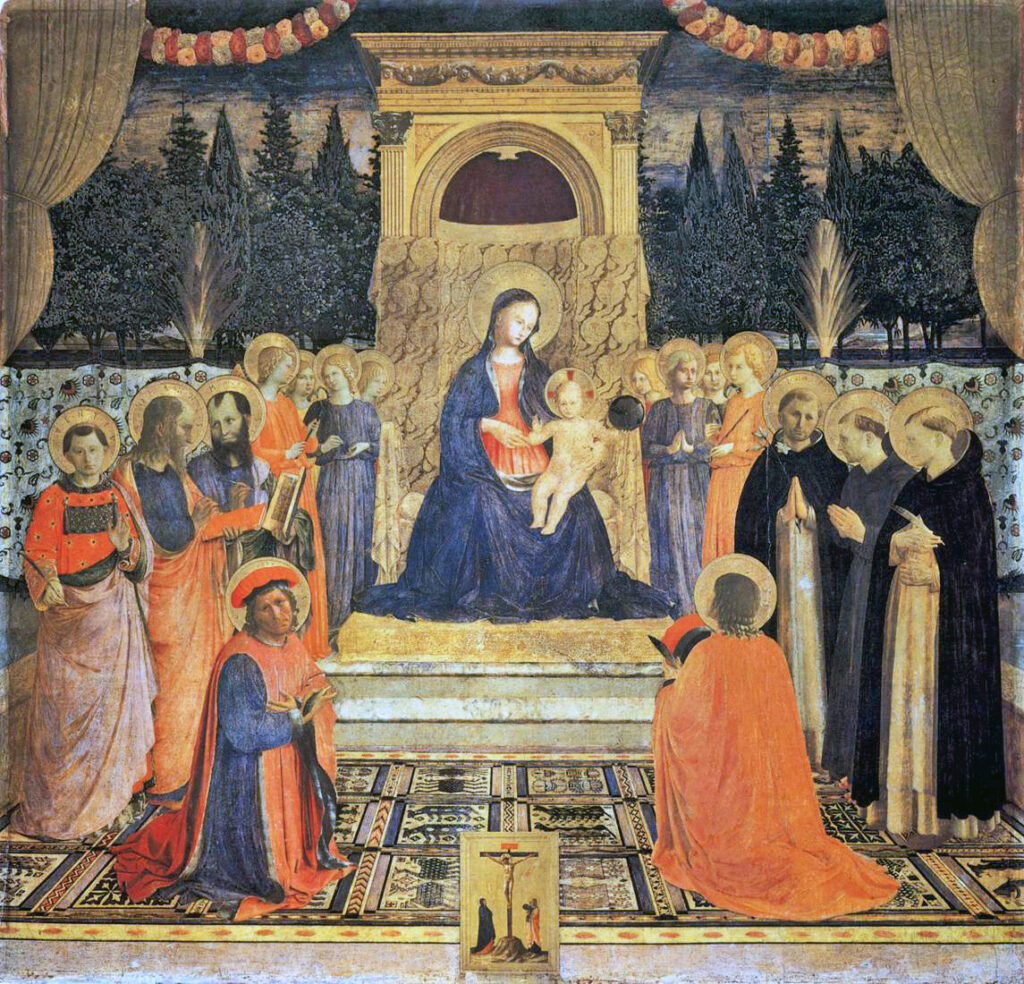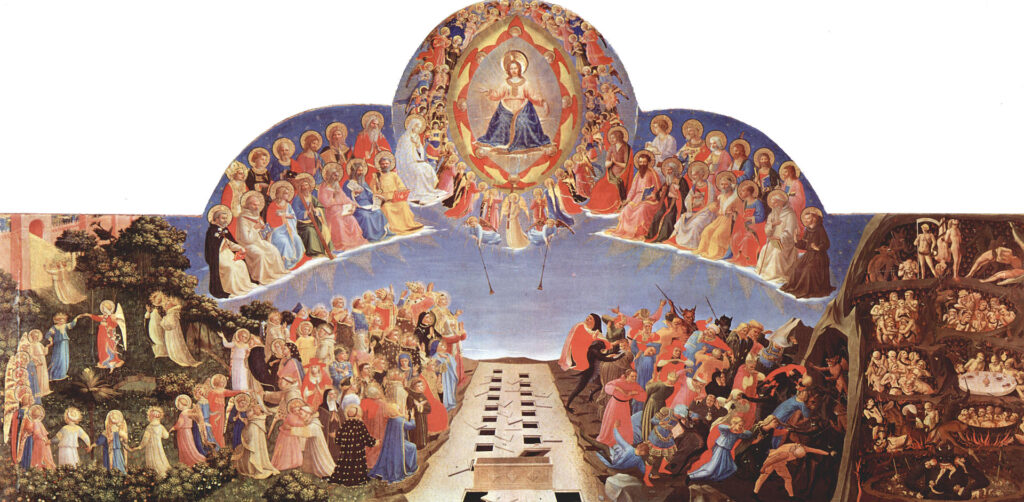
All images used are from Wikimedia Commons
The world knows him as Fra Angelico, one of the greatest painters of the early Renaissance. The Catholic Church calls him Blessed John of Fiesole, a Dominican friar who was known not only for his artistic ability but also for his holiness.
We only know bits and pieces about most of his life story, particularly his childhood. Most sources agree that his father’s name was Pietro, that he was born in a small town in Italy, probably around the year 1387, and that he was given the name of Guido at his birth. According to tradition, when he and his brother Benedetto were young men, they were so inspired by the preaching of a famous Dominican priest that they decided to enter that order.
It appears that Guido and Benedetto had already received some training as artists, almost certainly at nearby Florence, which was widely known at the time as an artistic center. Benedetto later became known as a painter of miniatures. When the two young men entered the Dominican order and became friars, Guido took the name in religious life of Giovanni (John, in English).
Unfortunately, Italy was not a peaceful place in the early fifteenth century. More than one man claimed to be the pope, and disputes between the Church and civic leaders repeatedly caused unrest and violence. There was also an outbreak of the plague. For several years, Giovanni and the other members of his community were forced to move to various towns for their safety. But the Dominicans quickly recognized his talents and assigned him the task of decorating the various friaries and churches wherever he lived. The painting below is one of his early works, one of the few that have not been lost over time.

One of Giovanni’s assignments was to paint devotional images in the cells of the friars. How would you like to have the image below on the wall of your bedroom? Unsurprisingly, at least one of the convents decorated by Fra Angelico has been turned into an art museum.

Before long, Friar Giovanni had become a widely known and respected fresco artist, and other members of his community were members of his workshop, which created artworks as small as illuminated missals and as large as frescoes on church walls. While living in Florence, GIovanni painted one of his most famous works, the San Marco Altarpiece (below). Art historians often note its use of perspective and metaphor, but it is also contains Dominican themes and contemporary political symbols. The latter is not surprising since it was paid for by the wealthy and powerful Cosimo de’ Medici the Elder.

Giovanni worked for popes as well. Near the end of his life, he completed one of his greatest achievements: the decoration of a chapel in the Vatican with scenes from the life of Saint Laurence (see one scene below). Even though Giovanni used gold and expensive colors (to please his wealthy patron), the image helps us see the Christian love of the poor, which Saint Laurence exemplified.

All of his works can be admired by specialists for their artistic ability and their influence on future artists. But even those of us who are not art historians can admire the beauty and the atmosphere of peace and serenity that he conveys in his paintings. He was not nicknamed Fra Angelico (meaning, the angelic brother) simply because he sometimes painted images of the heavenly court or because he lived a virtuous life. His paintings seem to take you to a world where angels dwell.
However, as Blessed John of Fiesole, his extraordinary life followed the same path of every ordinary follower of Christ. He recognized God’s call to a particular vocation, learned from others how to live out that vocation, and slowly developed skills throughout his lifetime. It was probably just as difficult for him to obey his bosses (his Dominican superiors) and keep calm when reading the latest political news as it is for us today. But all his life prepared him for the same destination that awaits all of us: the day we face judgement before Jesus Christ. May we face that day with the same peace, serenity, and trust in God that we see in the works of Fra Angelico.



